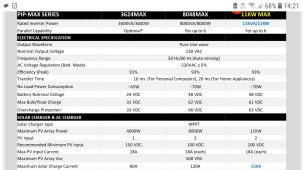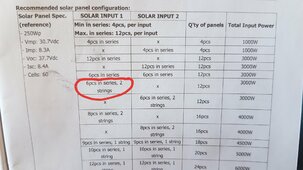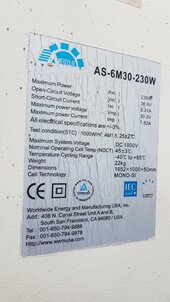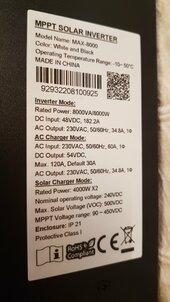Let's assume I have 40 panels 250w Isc 8.9a Voc 37.8
What is the best panel configuration for the MPP MAX 11KW? It has max 18a pv input current...

sunshine_eggo wrote on diysolarforum: Current limit is more flexible. Going a little bit over the current limit is typically fine as the unit just wont pull more than its max.
https://diysolarforum.com/threads/how-to-wire-and-how-close-to-amp-limit-help-please.39840/
With that in mind could this work?
10s2p for 1 string 378v @ 17.8a
10s2p for 2 string 378v @ 17.8a
What is the best panel configuration for the MPP MAX 11KW? It has max 18a pv input current...

sunshine_eggo wrote on diysolarforum: Current limit is more flexible. Going a little bit over the current limit is typically fine as the unit just wont pull more than its max.
https://diysolarforum.com/threads/how-to-wire-and-how-close-to-amp-limit-help-please.39840/
With that in mind could this work?
10s2p for 1 string 378v @ 17.8a
10s2p for 2 string 378v @ 17.8a
The 486 is way too close as over-voltage from low temperature voltage increase can kill the MPPT. 7S is likely better. Depending on your panels, they should be good on voltage down to about -20°C.
Current limit is more flexible. Going a little bit over the current limit is typically fine as the unit just wont pull more than its max.
Power limits are also more flexible. They tend to represent what the unit can deliver, not what it can have on its input.
I wouldn't hesitate to put 7S2P on each MPPT.
Last edited:






